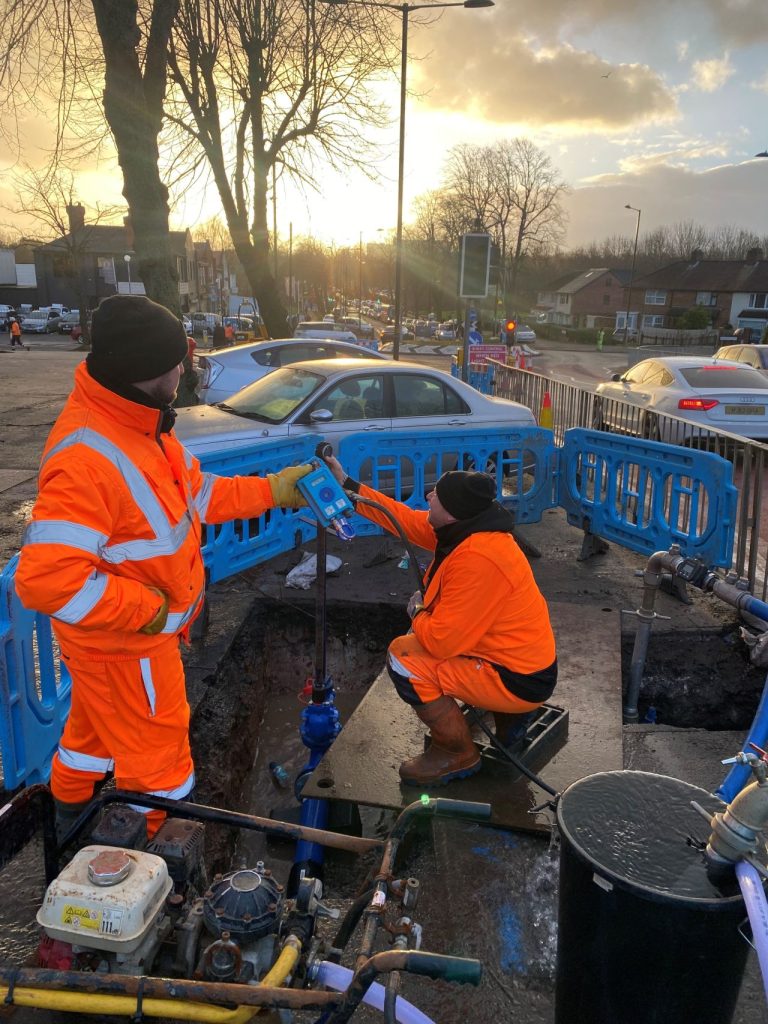Legionella Detection and Response: The Role of Root Cause Analysis
Legionella detection and response are crucial steps in maintaining water safety and protecting public health, especially in high-risk environments like hospitals, hotels, and large commercial buildings. When Legionella bacteria are found, a thorough and systematic approach is essential to prevent outbreaks and manage risks.
Here, we’ll explore how Legionella detection is carried out, how to respond to contamination, and why root cause analysis (RCA) is a critical part of this process. An, how Pipe Testing Services (PTS) can help with Legionella Contractor Services.
Understanding Legionella Detection
Legionella detection involves the regular testing and monitoring of water systems to identify the presence of Legionella bacteria, which can cause Legionnaires’ disease. In the UK, the Health and Safety Executive (HSE) recommends that testing be conducted by laboratories accredited by the United Kingdom Accreditation Service (UKAS) for Legionella analysis. That’s how we at PTS carry out our legionella testing.
Testing methods typically include:
Culture-Based Techniques
Considered the gold standard, culture methods involve growing the bacteria in a laboratory setting. Although accurate for identifying viable bacteria, this process can take 7-10 days. The results are reported in colony-forming units per litre (cfu/L), indicating the concentration of live bacteria.
Polymerase Chain Reaction (PCR)
This molecular method detects both viable and non-viable Legionella cells by amplifying the DNA. PCR is faster than culture methods, providing results within 24-48 hours. While it is highly sensitive, it may not differentiate between living and dead bacteria.
When Legionella is Detected: Appropriate Responses
When Legionella is detected in a water system, the response should be prompt and aligned with the level of contamination. The HSE’s Approved Code of Practice L8 provides detailed guidance:
- Detection of 100-1000 cfu/L: This level usually triggers a review of current control measures and may require cleaning and disinfection.
- Levels Exceeding 1000 cfu/L: Immediate system disinfection is necessary, and further investigation into the cause of contamination is warranted.
The goal is to swiftly mitigate any risks and restore water safety.

The Importance of Root Cause Analysis in Legionella Management
After detecting Legionella, performing a root cause analysis (RCA) is crucial for understanding the underlying reasons for contamination and implementing effective corrective actions. RCA helps identify the factors that led to the issue and prevent future occurrences by addressing the source rather than just the symptoms.
Steps Involved in Root Cause Analysis for Legionella
- Data Collection: Gather information such as water system schematics, maintenance records, and details of recent changes to the building or system.
- System Inspection: Conduct an on-site inspection, focusing on potential problem areas like stagnant water, "dead legs" in pipework, or biofilm formation.
- Review Temperature Logs: Check that water temperatures are within recommended ranges for Legionella prevention, typically above 60°C for hot water and below 20°C for cold water.
- Evaluate Water Treatment Methods: Assess whether the existing water treatment protocols, such as chlorination, are effective in controlling Legionella.
- Operational Review: Analyse maintenance routines and cleaning schedules to identify any lapses or gaps.
- Investigate Environmental Factors: Consider any external influences, such as nearby construction or changes in water supply, that could have affected water quality.
- Recommendations and Corrective Actions: Based on the findings, develop corrective actions that may include system redesign, updated water treatment protocols, or improved monitoring and maintenance procedures.
Role of Legionella Contractors in Detection and Response
Legionella contractors are vital partners in helping organisations manage water safety and comply with regulations. Their expertise extends beyond testing; they also assist with interpreting results, conducting emergency disinfection, and carrying out root cause analysis. Here’s how they support Legionella management:
Legionella Risk Assessments
Contractors perform thorough assessments to identify risks within water systems, which is a legal requirement under the Health and Safety at Work Act 1974 and the Control of Substances Hazardous to Health Regulations 2002 (COSHH).
Emergency Disinfection Services
When Legionella is detected, contractors can provide immediate disinfection using techniques such as chlorination or thermal treatment.
Development of Water Safety Plans
Based on the findings from RCA, they help create or update water safety plans to mitigate identified risks.
Ongoing Monitoring and Maintenance
Contractors offer regular water quality testing, system maintenance, and advice to ensure continued compliance with safety regulations.
Training and Compliance Support
They provide training for facility managers and staff on water safety best practices and legal obligations.
Legionella Detection Methods: Culture vs PCR
While culture remains the standard method for detecting Legionella, molecular techniques like PCR are gaining popularity due to their speed and sensitivity. Understanding the differences between these methods can help in choosing the most suitable approach.
- Culture Testing: Provides viable bacteria counts and is accepted by most regulatory bodies for compliance purposes. However, the process is slow, taking up to two weeks for results.
- PCR Testing: Offers rapid results within 24-48 hours and can detect Legionella at very low concentrations. It is especially useful for assessing the risk quickly during potential outbreaks. However, PCR may detect dead bacteria, leading to possible overestimation of contamination levels.
Combining both methods can provide a comprehensive understanding of water quality, allowing for a more effective response.
Key Triggers for Legionella Response
Legionella responses are guided by action levels and risk assessments. Key triggers include:
- Legionella Levels Exceeding Action Thresholds: The HSE suggests immediate action for levels above 1000 cfu/L.
- Significant Trends in Test Results: If Legionella counts are consistently increasing, even if below action levels, a response is necessary.
- Changes in Water System Usage: Any alterations in water system operation, such as during building renovations, warrant a reassessment of water safety measures.
Steps Involved in Root Cause Analysis for Legionella
Pre- and post-flush sampling are useful techniques for detecting Legionella contamination:
- Pre-Flush Sampling: Identifies contamination in stagnant water within pipework, indicating localised issues.
- Post-Flush Sampling: Shows the quality of water throughout the system after a specified period of flushing, helping determine if contamination is widespread.
- Comparing Results: Significant differences between pre- and post-flush results may indicate biofilm presence, which requires specialised treatment.
Contact Pipe Testing Services
For professional Legionella detection, response, and water system safety services, contact Pipe Testing Services using the following details:
- Phone: 01922 451646
- Email: enquiries@pipetestingservices.co.uk
- Address: Unit 27 Birchbrook Industrial Estate, Shenstone, Lichfield, Staffs, WS14 0DJ
We are dedicated to providing high-quality services to ensure the safety and compliance of your water systems. Get in touch to discuss your needs or schedule a consultation. Our experienced team is ready to help.
Contact us today for a personalised quotation that suits your budget while ensuring the highest standards of service.

